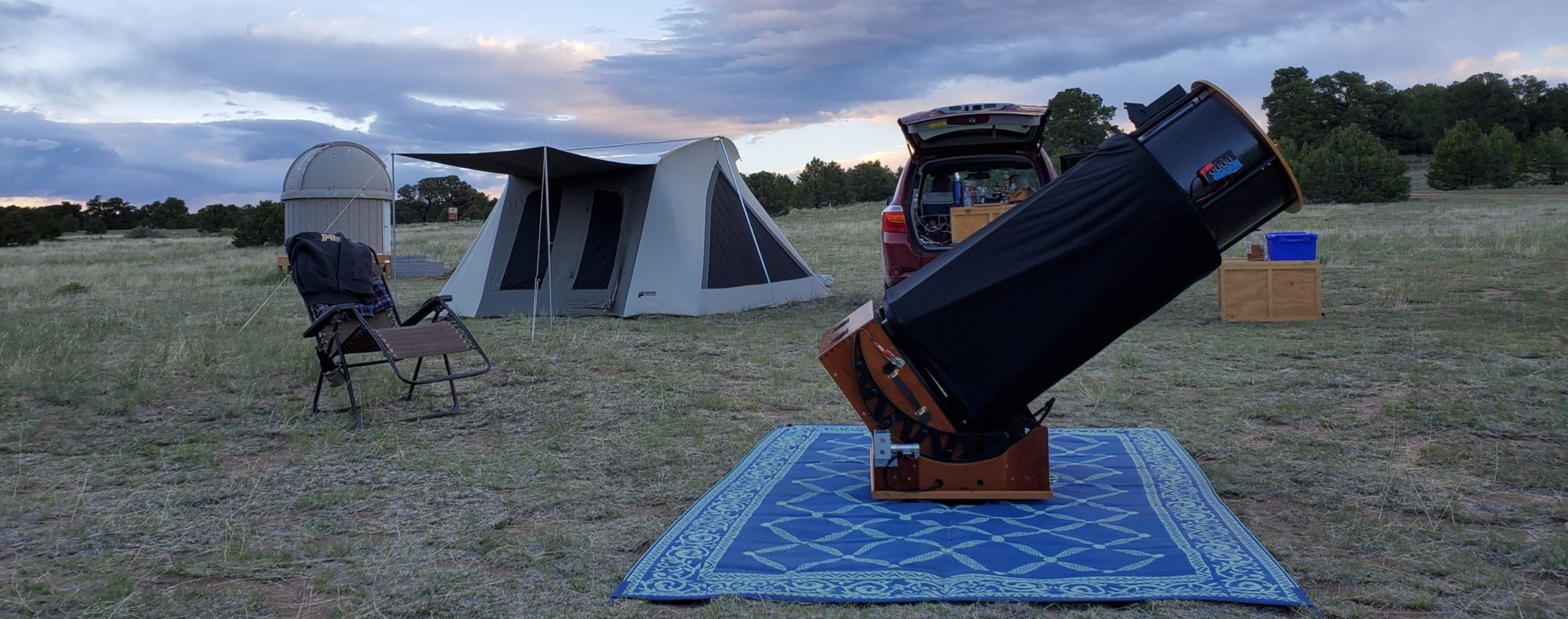I recently took a trip out to the Colorado Springs Astronomical Society’s dark sky site, also home to the annual Rocky Mountain Star Stare, where many were set up to camp and observe for about a week. The elevation at this site is nearly 7,700 feet with mountain ranges on both sides. The skies here are very dark! While I don’t plan on going into detail on all 101 galaxies (you’re welcome), I did want to touch on some of the highlights.
eat

The eat section for this blog is slightly different in that we were camping for several days with only what we brought. We generally plan on having 1 gallon of water per day per person, enough propane to cook up some really great meals (about 1 lb. per day per person) and plenty of food. Since I plan to be doing these trips often enough, I decided to pick up a good camp stove when it went on sale, the Camp Chef Explorer Double Burner Stove. It occasionally goes on sale at Cabela’s for $80, so not bad. Throughout the week I cooked up brats, bacon, eggs, hash browns, steak, pasta, and one of my camping favorites, Jiffy Pop Popcorn! Here’s a picture of a bacon, fried egg and cheese sandwich with my scope and the mountains in the background. Not bad eating!
drink
Being that we were in the mountains day and night for nearly a week, you can imagine there would be a wide variety in the drink section! During the afternoons, we’d have a couple beers and everyone swaps what they brought with everyone else to increase variety. I brought Boulevard Tank 7, one of my favorite beers, and one that’s easily swapped for almost anything. At night, we had several whiskies and scotches to choose from, including my all-time favorite, the Ardbeg 10 Year. Finally, on more than one cold night, hot chocolate with Rum Chata was served up and enjoyed very hot!
astronomy
When you get skies like these, you want to find a good mix of looking at the brightest, showpiece objects and the faintest ones that just aren’t visible in other places. On this particular trip, I spent most of my time in Virgo, one of the best constellations for galaxy hunters.

N 5044 Group
NGC 5044 – Bright, large, round, bright central core with very obvious halo around it, nice galaxy even at low altitude, shares field with 5 other visible galaxies, this being the brightest.
PGC 46108 – Faint, small round galaxy with no discernable core, 5th brightest of a group of 6 galaxies.
NGC 5047 – Bright, large edge on galaxy, very bright stellar core, elongated E to W 3:1, shares field with much brighter NGC 5044 and three others.
PGC 83870 – Extremely dim, moderately sized, only caught glimpses with extreme averted, faintest of the group.
NGC 5049 – Small, bright galaxy with a bright central core, round, not much structure visible, shares field with much brighter NGC 5044 and five others.
NGC 5046 – Somewhat bright stellar core, small, hint of structure with averted, round.
Ursa Major
I did decide to venture out into Ursa Major and check out M81/M82 for a while. Here’s what I saw:

These galaxies are simply beautiful when viewed at low power, or individually at high power for that matter. I personally think M82 is the showpiece here, with brighter M81 being made special due to proximity to M82.
M81 – Very large, very bright face on spiral, very bright core with still bright huge halo, near showpiece galaxy M82. Easily the brightest object I logged in all 101 galaxies!
M82 – Very large, very bright edge on spiral galaxy, striking view, noticeable core with a dark vertical lane just WSW of the core, bright lump just WSW of that gap, this could be actual core, elongated WSW to ENE 9:1.
NGC 3077 – Somewhat large, bright galaxy, roundish with a bright inner halo and dimmer outer halo.
Comet C/2017 T2 Panstarrs

Seeing comet C/2017 T2 Panstarrs was especially exciting since it counted toward the 2 In The View observing program for a friend of mine. One of the challenges is to get a comet with another DSO in view. In this case, we observed the comet and NGC 3027 in the same field. Here were my notes:
C/2017 T2 Panstarrs – Large, bright comet, no visible tail, big bright fuzzy halo with brighter central core.
NGC 3027 – Moderately sized, faint, even surface brightness, elongated NW to SE.
While these examples only make up about 10% of the 101 galaxies I saw, this gives you a good idea of a brighter, more well-know view was versus some fainter, lesser-known NGC/PGC galaxies. If you have any questions, please contact me!
